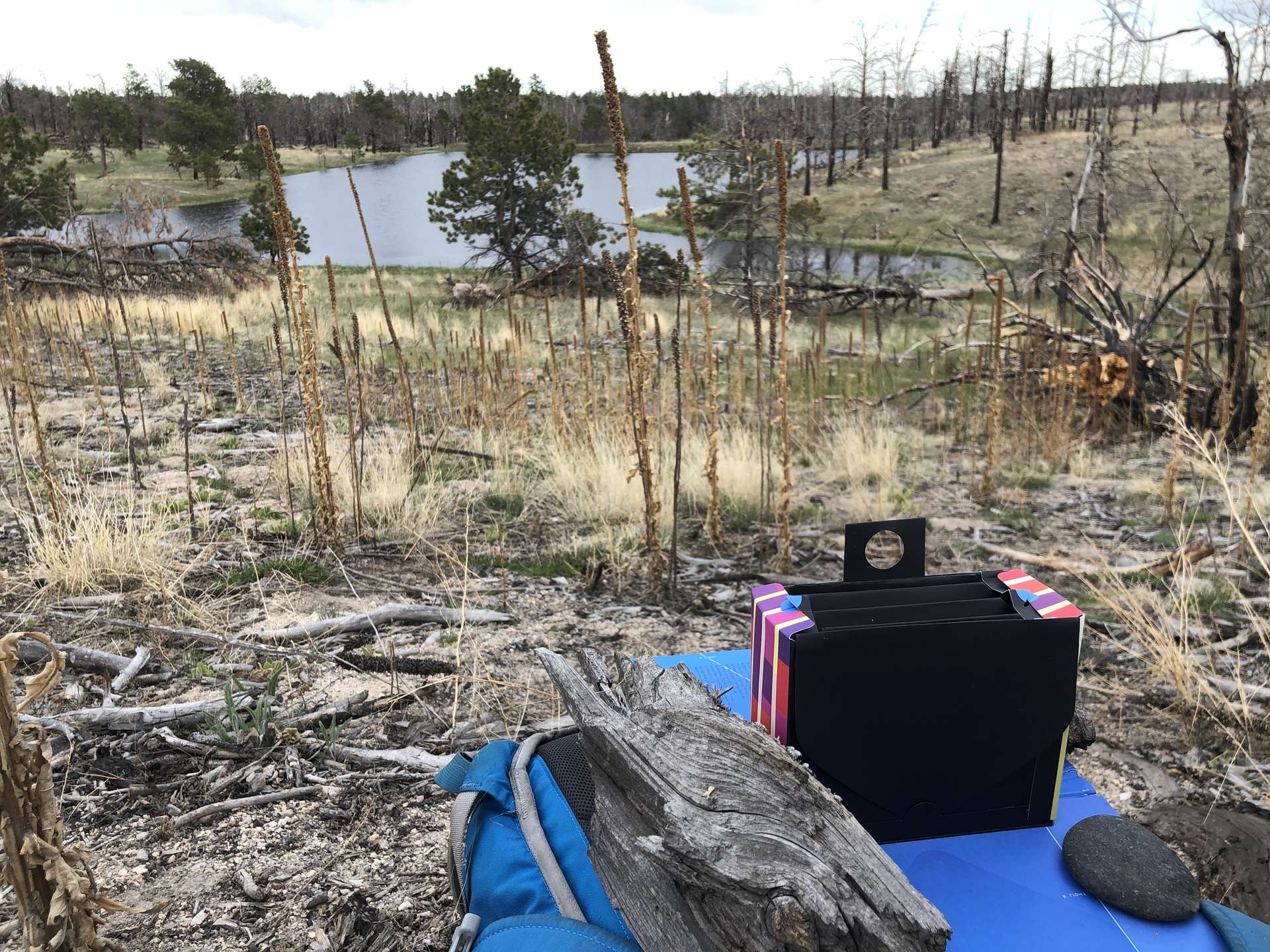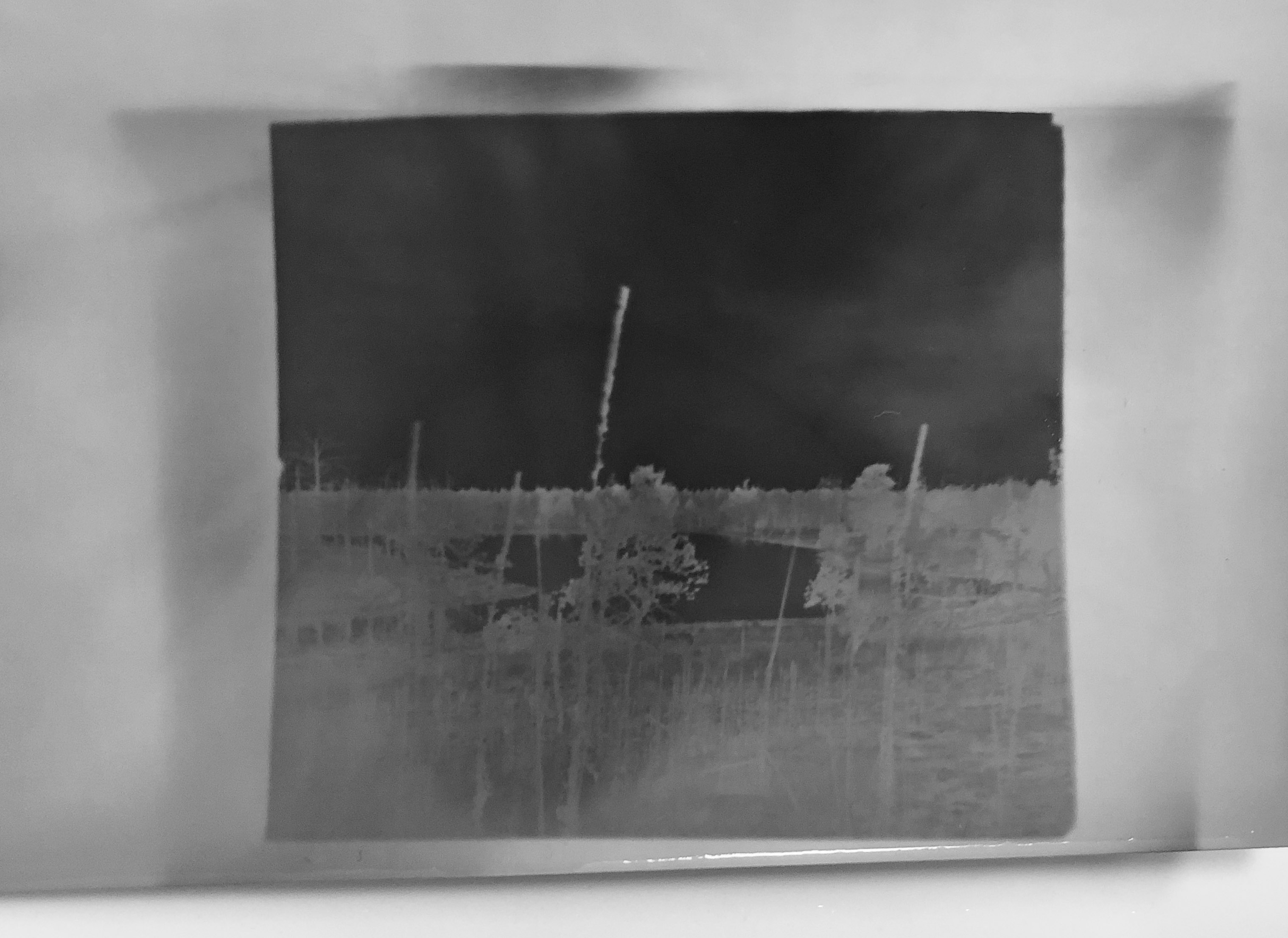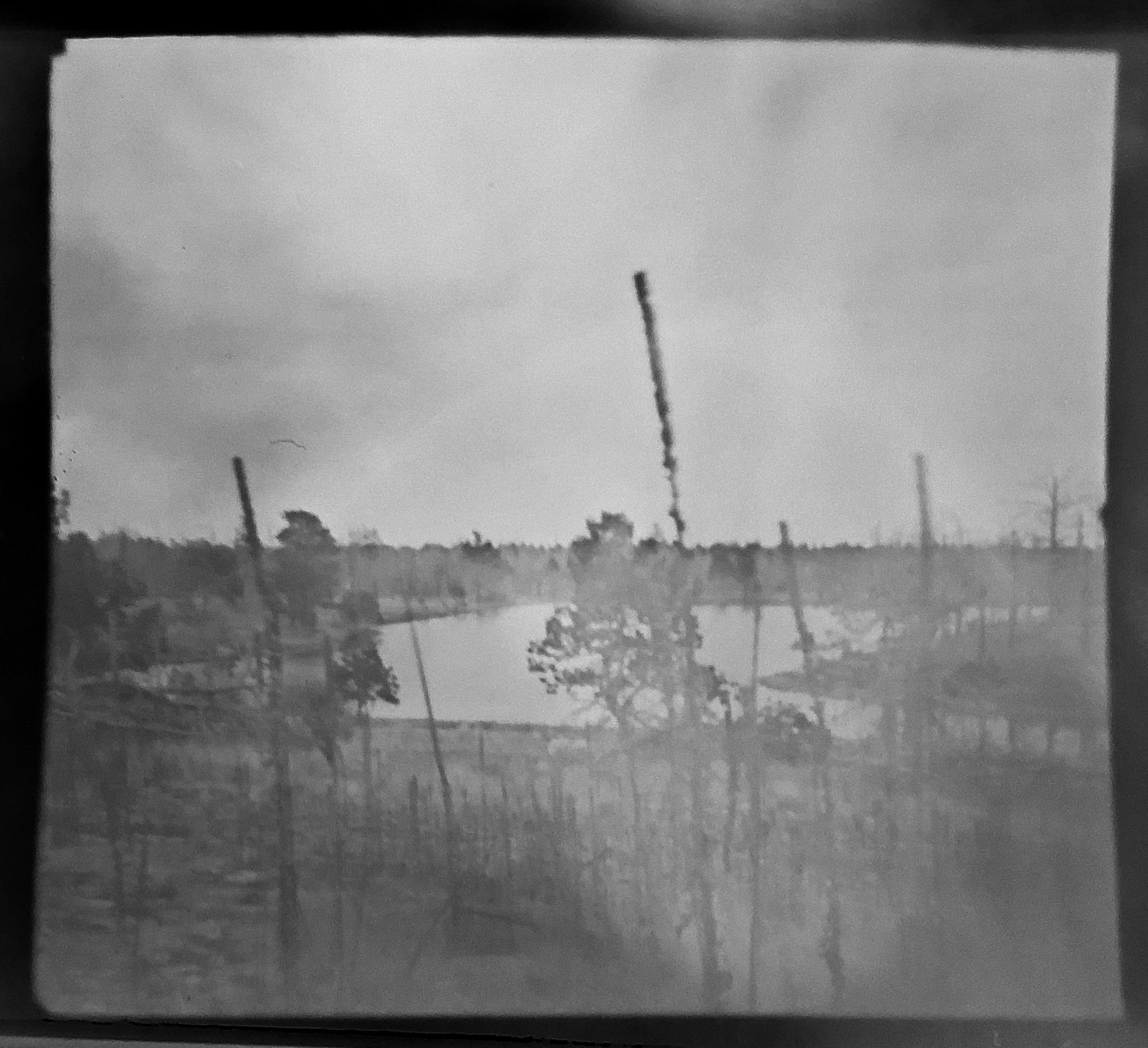10 projects - #5
pinhole photography
taking a pinhole photo and using baking soda and instant coffee to develop the image
project goal
This project is simple, but it is the first project in the challenge with tangible outputs. I recently bought the aptly titled "This Book is a Camera". As the name implies, the book contains a popup pinhole camera, along with five sheets of photosensitive paper. Today the goal was to find a suitable subject, take a pinhole photo, and develop the image.
methods
I traveled to a pond in the woods, and looked for a place to set up the camera. Given that the camera is a popup book, it was a challenge to find a place with an appropiate view so close to the ground. I found a suitable scene, and propped up the camera on my backpack.
I first thought that I would do the clustering in image space. While this approach would be the most straightforward, it would based on the contents of the image rather than the features of the bird. For example, a bird facing to the right may be located far from a bird facing to the left as they differ strongly in image space.

The camera scene and setup.
In order to gauge the proper exposure length, I used an accompanying light meter app. The focal equivalent of this pinhole camera is f/228 and the photo paper sensitivity is equivalent ot ISO 10. This amounted to a 70 second exposure for the cloudy scene. There's only one chance for an exposure with this camera, given that you need to load the photo paper in darkness. It gives the process of taking a photo a gravity that isn't present even with a typical film camera.
To develop the photo, we need a process that renders the photosensitive crystals in the paper unresponsive. In this case, washing the paper with caffeic acid does the trick, and the acid can be found in coffee. However, the solution also must be a fairly strong base. So the developing solution is a combination of instant coffee (3 tsp), a stronger version of baking soda called washing soda (6 tsp), and 250 ml of water. After bathing the photo in the solution in a dark room for 3 minutes, and rinsing in pure water for another minute, the photo is ready.
Lastly, the photo needs to be processed. The captured image is a mirror of the real scene, both in geometry, and in brightness. This inversion and flipping is done digitally.
results
Here is an image of the paper after development. You can see the inversion of the image, where bright regions are dark and visa versa.

Developed photo before processing.

Inverted image after developing and processing.
conclusion
There are many things I'd like to change in this photo, from composition to exposure time, but the result is almost magical. Being able to collect the light in the world around us using nothing more than photosensitive crystals and a popup pinhole is remarkable! I'm excited to try more versions of this in the future.
what would i do next
- Take more photos!
- The processing on this one was straightforward as I took a digital picture of the physical photo in order to invert. I'd like to scan the negative in the future.